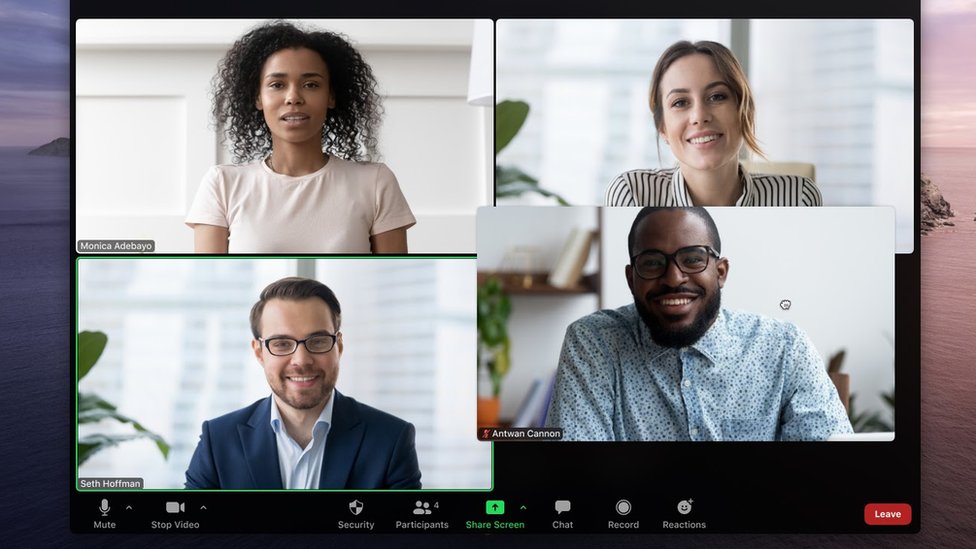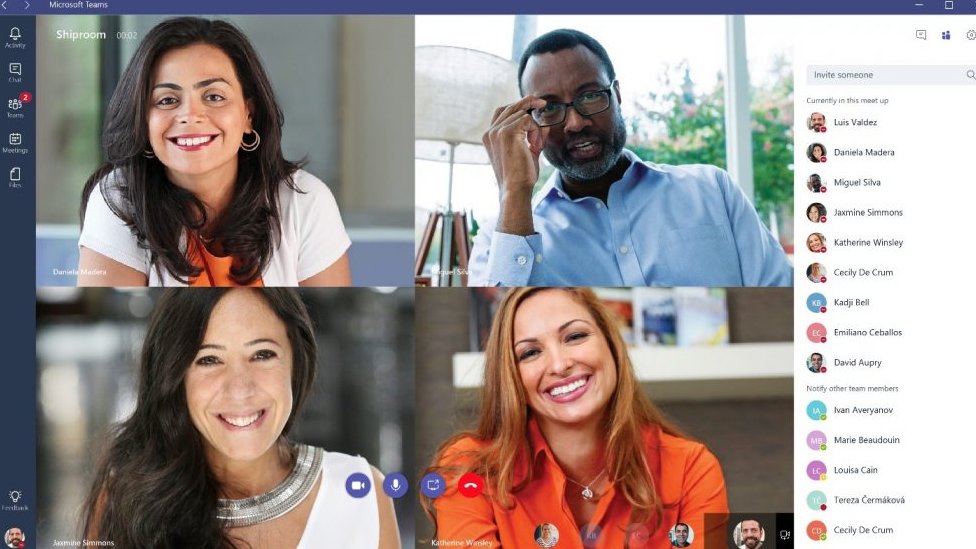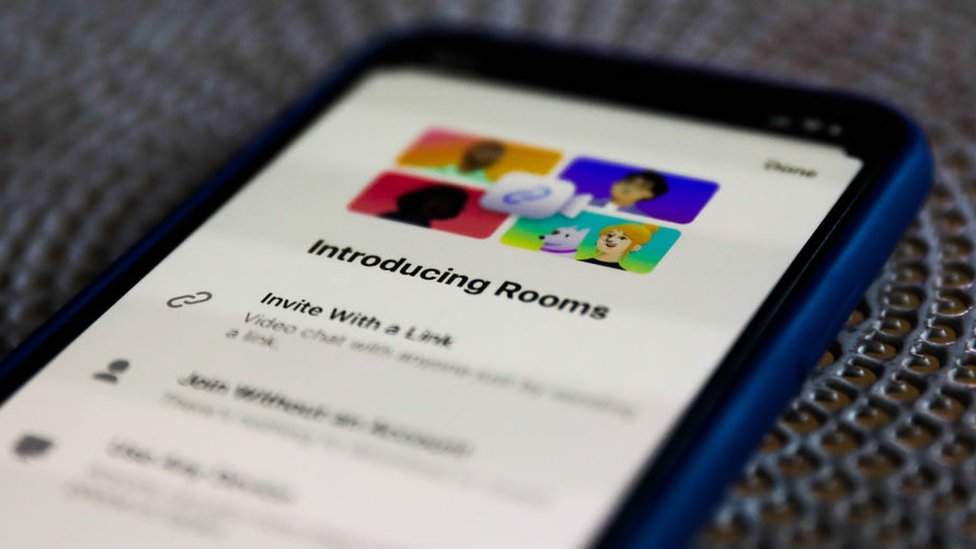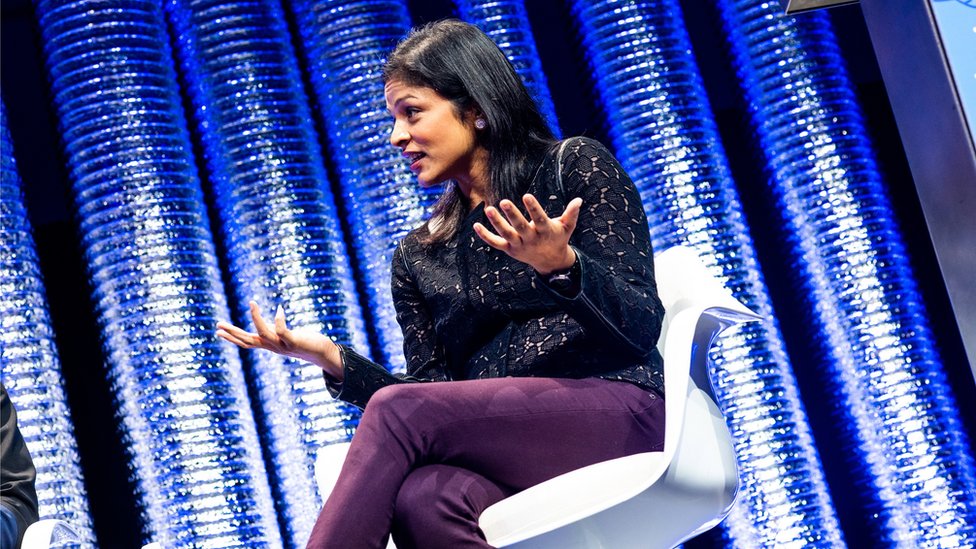 image copyrightZoom
image copyrightZoomAparna Bawa says that she and fellow Zoom executives were so busy earlier this year that they had to take turns to go to bed.
"Our CMO [chief marketing officer] and I... I remember back in April we would take shifts to sleep, it was crazy," says Ms Bawa, who is chief operating officer at the US video calls and conferencing firm that this year became a household name.
"It has been insane, but there is a time and a place. And I personally feel a strong sense of obligation. We [at Zoom] are so lucky that we can provide this service."
Roll back to the start of this year, and it is fair to say that most people hadn't heard of Zoom, even though the company had launched in Silicon Valley in 2012, and had grown into a very successful business.
Most of us didn't bother with video calls, either for work or in our personal life. Then the coronavirus pandemic hit in March.
 image copyrightZoom
image copyrightZoom"At the end of December 2019 I remember thinking 'goodness we are in a great place', as we had, on average, 10 million daily meeting participants," says Ms Bawa. "By April we had reached 300 million daily meeting participants, and it has stayed around that level ever since."
How do Zoom's figures compare with its rivals? Google Meet uses the same daily participants metric, whereby a user will be counted for every meeting he or she attends that day. It says its numbers "had a peak of 235 million" in the third quarter of this year.
Meanwhile, Microsoft Teams, which only counts a person once, no matter how many meetings they join per day, said that by October daily users of its service had grown to 115 million.
Facebook wouldn't reveal numbers for its Messenger Rooms video conferencing service, but said that daily video calls across its Messenger app in general now totalled more than 150 million.
So why has Zoom, in particular, been so popular?
Martin Veitch, contributing editor at technology website IDG Connect, says that Zoom has been "the right company at the right time".
He adds: "I think the key reasons for its success are ease of use, the 'freemium' business model... and strong underlying technology that deals well with sub-standard internet connectivity."
Angela Ashenden, a tech analyst at research group CCS Insight, says Zoom did well to swiftly address security issues earlier in the year. "Clearly these had an impact on Zoom's perception among some business users, and we saw multiple organisations banning its use as a result," she says.
"But equally, Zoom responded quickly, and has doubled down its investment and commitment to resolving these issues. It's done a great job on this front actually."
 image copyrightMicrosoft Teams
image copyrightMicrosoft TeamsWhat is certain is that thanks to Zoom's operational structure it was able to cope with the huge increase in user numbers back in the spring.
The firm operates a cloud computing-based system, with the main processing work being done at computer server centres around the world.
Prior to the pandemic the company was focused on its long-term growth, so it already had 19 such centres that it owned. This was more than it needed for user numbers at that point. In addition, Ms Bawa says it had contracts in place to allow it to use "tens of thousands of other servers in five hours [notice]".
So when user numbers skyrocketed, Zoom was able to quickly expand into this additional capacity.
Many of those new users were members of the public keeping in touch with family and friends during lockdowns, but in the world of work it hasn't just been about simple video calls or conferencing.
In fact, Zoom has been used for everything from job interviews, to making people redundant, to office Christmas parties. And people starting new jobs from home have used the platform to try to get to know their new colleagues.
 image copyrightGetty Images
image copyrightGetty ImagesLooking ahead, Ms Bawa says that video conferencing is here to stay because most of us will continue to work from home, at least part of the time.
"The future of work has forever changed," she says. "More and more of our customers say that they will go to a hybrid model - some folks told us there will be defined periods of working from home, maybe two or three days a week.
"Others will do it by project type. So if I'm working on my own presentation I would do it at home. But, say, if you are an investment banker working with a team on an important deal, you would all go into the office."


New Tech Economy is a series exploring how technological innovation is set to shape the new emerging economic landscape.

While working from home is a joy for many people, some of us still dread having to participate in video conferences.
Business psychologist Stuart Duff, a partner at Pearn Kandola, says he has helped a number of clients better cope with them.
"The overuse of video conferencing is now called 'Zoom fatigue'," he says. "There are four main ways of communicating - by text, video, phone call, and face-to-face.
"Nothing replaces face-to-face. Video is the next best thing, but not when used nine-to-five, or for every meeting."
Mr Duff says that companies should try to make video meetings less structured, and that more time should be built in for allowing informal chit-chat. When it does come down to formal meetings by video, he helps his clients to be more assertive.
Fellow business psychologist Jess Baker also helps clients cope better with video meetings.
"Being prepared enables you to feel more confident," she says. "Prepare for each call as you would for a meeting with your manager [in person].
"Then make eye contact with the camera and regardless of how many people are on the call, just imagine it's just one person that you are speaking directly to. This may feel silly to you at first but your audience will be impressed."

Ms Bawa agrees that the overuse of video calls and conferences can be a problem for some people. "When people talk about Zoom fatigue, the struggle is real, but it is not Zoom's fault.
"You have to build wellness into your life, and take breaks [from the screen]," she says. "The pandemic hit Zoom employees as much as it did everyone else, and we have the same issues.
"For us focusing on the mental health of our employees has been very important."
Zoom's basic service is free, but firms can then pay so that meetings can run for an unlimited period of time, and have more participants, plus other features.
Ms Bawa says that for all Zoom's commercial success this year there hasn't been a celebratory mood at the company, because of the pandemic.
"It has been a sombre time. You don't feel like celebrating when so many people around the world are suffering."
